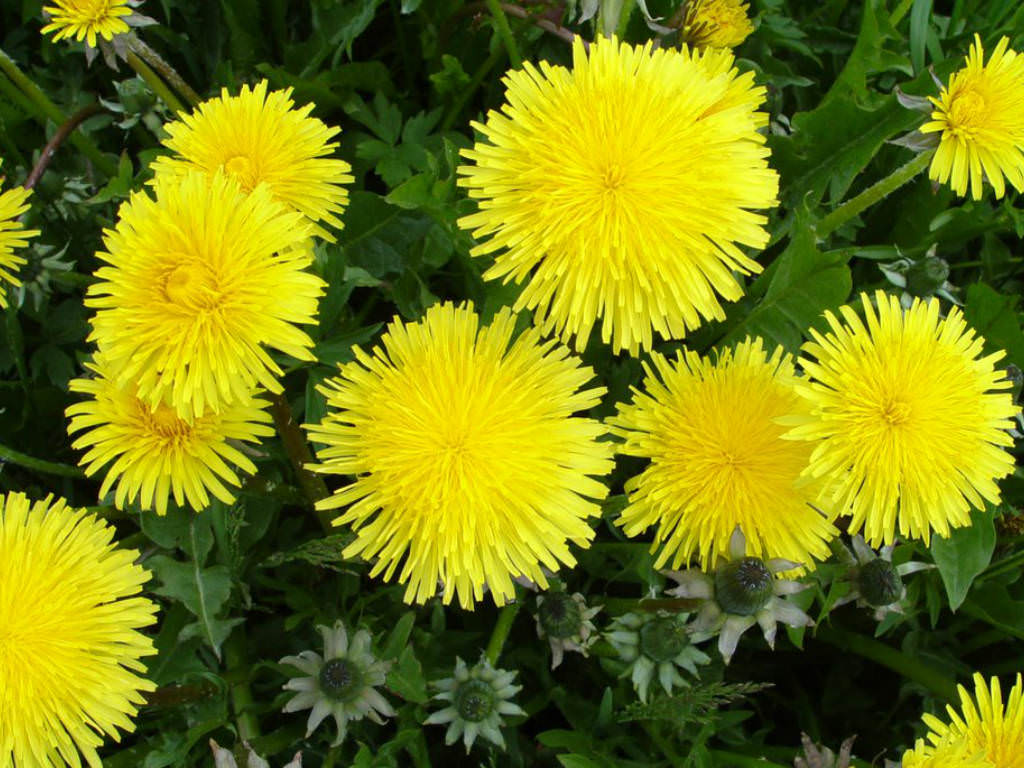Common Names:
-
English: Dandelion
-
Bengali: Pitachumki
-
Hindi: Dudhi, Baran, Dudal, Dudh-batthal, Dudhal
-
Kannada: Kaadu Shaavanthi
-
Malayalam: Dugddhapheni
-
Sanskrit: Dugdhapheni, Lootari, Payasvini
-
Telugu: Patri
-
Urdu: Bathur
Botanical Name: Taraxacum officinale
Family: Asteraceae (Sunflower family)
Parts Used:
-
Roots
-
Leaves
Plant Description:
Dandelion is a hardy perennial plant found in abundance across fields, meadows, roadsides, and lawns. It can grow up to 38 cm in height. The plant features only basal leaves — toothed or deeply lobed — radiating from a central point near the soil.
Its bright yellow flower heads measure up to 4.5 cm wide, composed of 40 to over 100 small florets. Blooming begins in mid-spring and can continue well into early winter. After flowering, each seed is attached to a slender stalk topped with a parachute-like structure called a pappus, enabling wind dispersal.
Interestingly, while gardeners and lawn owners often seek to remove dandelions, the plant boasts significant culinary and medicinal value. Naturalist Euell Gibbons once devoted over four pages in his book Stalking the Wild Asparagus to the edible virtues of this humble weed.
Therapeutic Uses:
Dandelion is a highly regarded herbal remedy, known especially for its diuretic properties. Unlike conventional diuretics, dandelion naturally replenishes lost potassium salts, preventing electrolyte imbalance.
Medicinal properties of the plant include:
-
Aperient (gentle laxative)
-
Cholagogue (stimulates bile flow)
-
Depurative (blood purifier)
-
Strong Diuretic
-
Hepatic Tonic (liver support)
-
Stomachic (aids digestion)
The plant’s roots are particularly valuable — exhibiting cholagogue, hypoglycemic, and even mild antibiotic effects. They’re best harvested after two years of growth in autumn. The leaves are collected in spring and can be dried for year-round use.
A tea prepared from either the roots or leaves is often used in natural medicine to address:
-
Gall bladder and urinary disorders
-
Gallstones and jaundice
-
Liver congestion and cirrhosis
-
Dyspepsia with constipation
-
Oedema associated with high blood pressure or heart weakness
-
Chronic joint and skin diseases, including gout, eczema, and acne
Antibacterial Action:
Dandelion has been shown to inhibit the growth of various bacteria such as:
-
Staphylococcus aureus
-
Pneumococci
-
Meningococci
-
Bacillus dysenteriae
-
B. typhi
-
Corynebacterium diphtheriae
-
Proteus species
Latex Benefits:
The plant’s white, milky sap or latex is traditionally applied to remove warts, corns, and verrucae. It’s also believed to reduce inflammation of the gall bladder and help dissolve liver stones.
Notable Fact:
A tea made from the leaves acts as a natural laxative and mild detoxifier.
Conclusion:
Often overlooked as a mere garden weed, Dandelion (Taraxacum officinale) is a treasure trove of medicinal properties. From supporting the liver and urinary system to fighting bacterial infections and soothing skin problems, this resilient plant proves that nature’s simplest offerings often hold profound healing potential.
Speech Disorder
A speech disorder, also known as a speech impairment...
ADHD
Attention-deficit / hyperactivity disorder (ADHD) is a...
Cerebral Palsy(CP)
Cerebral palsy (CP) is a group of neurological disorders...
Cancer
Cancer is a broad term for diseases where cells...




